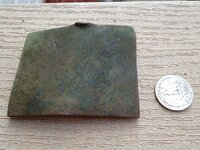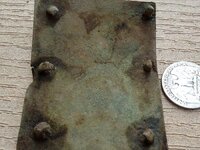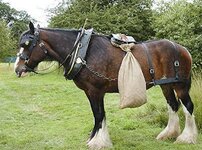ticm
Silver Member
Dug this up this am. It was pretty deep at around eight or ten inches. I found it at the same site I found a couple of old coppers. (see below listed post on this fourm). Before I cleaned off the dirt there was still hunks of old leather in the back hooks. I think I have seen somthing like this on the forum but can't remember for sure. Has anyone seen this before and know what it was used for and maybe when. http://forum.treasurenet.com/index.php/topic,457284.0.html











 My main debate was that the one originally posted at the top, was most definitely Colonial period "something", rather than Victorian period.
My main debate was that the one originally posted at the top, was most definitely Colonial period "something", rather than Victorian period. 


